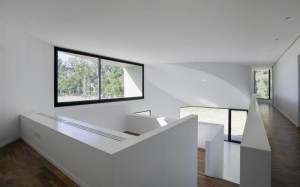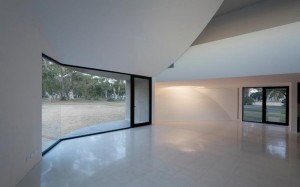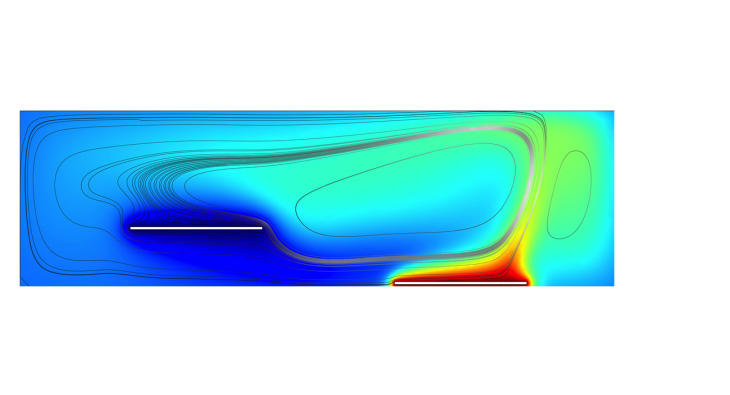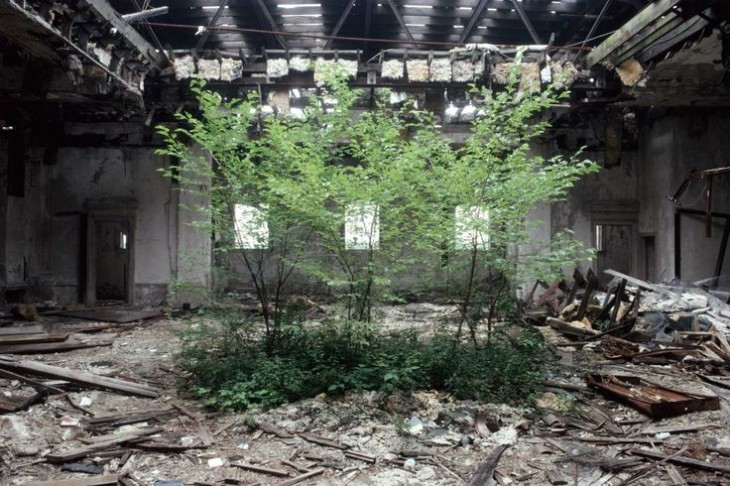RELATIONAL LOGIC_T3 Click to view PDF
RELATIONAL LOGICS_T3
Case study: View House, by Diego Arraigada and Johnston Marklee
Text: The architecture of atmosphere, by Mark Wigley
Pictures presenting the constant interaction of nature and inhabitants in their daily activities
References: http://www.topboxdesign.com/view-house-in-rosario-argentina/view-house-interior-1/ , http://www.archimodes.com/view-house-by-johnston-marklee-diego-arraigada-arquitecto-in-rosario-argentina/view-house-interior-glass-wall/
View House, designed by Diego Arraigada and Johnston Marklee, is a two floor, curved building located in Argentina. Its design constitutes an attempt to redefine the relationship between inhabitants and the surrounding environment, by redrawing the architectural boundary between residence and nature. This building consisting of a continuous façade, rather than multiple, has a shape that eliminates the disadvantage of favorable and unfavorable views, redefining constantly the relationship between the interior and the exterior. The main purpose of the architects is to relate the inside daily activities with the outside natural environment, while at the same time maintain the required privacy of a residential space. This is obvious, considering the inclusion of the building at the corner of the plot, associated with its shape, the direction of the desired viewports and its subtracted parts. The geometric subtractions, the position of the openings as well as the interior design create the illusion of a dynamic spiral upward movement. In this building we can identify three different types of architectural relations.
First, positional relation, indicated through the orientation of the building towards the surrounding trees, and a conspicuous attempt to take distance from the neighbouring houses. In this case, the proximity of the trees and the buildings determines the relationship between the habitat and its environment. The atmospherical relation is pointed out by the main concept of the design. The architects, acting as film directors, create a plot in which every single natural area outside the house constitutes the scenery of daily activities taking place inside the house. Residents are invited to interact with nature all around the building, in every single room. Trees are used as architectural materials, defining the shape, the volume, the orientation and position in the design process. Another kind of relation observed is that of intangible relation. The leveling of the building in relation to the height of the trees, is evident through the location of the openings either on the ground or the upper floor, according to the surrounding vegetation. The element of light has been also used as an architectural tool in order to emphasize both the circumferential view and the upward spiral movement.
“The architecture of atmosphere” written by Mark Wigley, analyses the relation between the buildings and their natural or ambient environment. Atmosphere has an abstract notion. It has no definition. It depends on emotions and differential perceptions of our surroundings. Therefore, it is almost impossible for an architect to control it. Many architects have been trying continuously to impose on architectural atmosphere according to their specific vision, most times resulting in creating unpredictable or unsuccessful effects. Atmosphere cannot be defined from the architect. Different factors such as human and nature concur the designed environment, giving new meaning and uses to the constructed space. On the other hand, constructing an atmosphere when building a structure is inevitable. Even by rejecting its existence, subconsciously, you end up creating a particular atmosphere. Good atmosphere is associated with an ideal architecture, forcing architects to attach particular attention to the way they manipulate the surrounding environment.
The atmosphere is used as an architectural element, as a tool in an architect’s pallet. In reality, constructing a building results in constructing an atmosphere. It seems as the building itself constitutes a mold for the surrounding atmosphere. What it is actually experienced is the atmosphere created, not the object itself. It is the atmosphere created by architects and determined by the ambient environment that influences our daily lives. Surfaces produce atmosphere, creating different sceneries in the interior and exterior of the buildings. The architect as another film director creates a specific scenery using special effects in his drawings, pre-visualizing a specific concept for the built and unbuilt area, an illustration of the future plan for it. Architectural designs, as every representational technique, are an attempt to create simulations of the atmospheric environment that surrounds the building, an effort to define atmosphere.
What it is indicated, in both case study and text, is that no matter how much the architects try to control the different elements consisting a building, such as atmosphere and architectural sceneries, human and natural elements turn out to rewrite the plot, creating their own relationship with space, leaving architects helpless to have complete control on the design and assert through all the different factors interacting with the building through time.
Regarding a personal research topic, I would like to investigate the possible evolution of the boundaries set between the interior and the exterior of a building, depending on the environmental and social changes, as well as the technological progress. The design of buildings that deny the traditional boundaries between human and nature, using more innovative ones, offering the ability of the inhabited shell to interact with its ambient and natural environment.
Relational Logics_T5
Sustainable development policies are indeed a major factor in formal upheaval in contemporary architecture. Nevertheless, these sustainable inputs do not affect the appearance or the physical structure of the building. Otherwise, the excessive energy consumption in building sector leads into climatic and environmental disasters; this premise involves both technical and political challenge in order to reduce consumption in building section.
Philippe Rahm unfolds a paradox in the conception of sustainability; he signalized that for reaching a sustainable building, it has to be completely seal from the exterior. By sealing the building it is possible to avoid any heat transfer and to regulate all the exchanges with the environment.
After Louis Sullivan´s dictum “ form follows function” and Louis Kahn ´s affirmation “ function follows form”, a new purport in architecture is now emerging in order to foster an architecture free of formal and functional predetermination ; ergo, “form and function follows climate” . In accordance to this premise, the functional and symbolic constraints are replaced with open interpretations in architecture that leads into different layers of innovation.
In conclusion, the author prompts to liberate the built space and the functional determination open to interpretations; also suggests not creating new rooms to accommodate new functions, but to give free rein to the functional interpretation of space.
This article contradicts in a conceptual way the case study of Andres Jaque and the Never Never Land house. The paradox of isolation that Rahm presents on his lecture contradicts the premise of this house. Unlike the sealing of the building, Andres Jaque works directly with the environment, trying not to create a gap between the building and the surrounding; he develops a building with hierarchies and relations between spaces and nature.
Focusing in the grasp of relational logics in advanced architecture, it can be explained or understand as a system of systems. These systems do not work isolated, they depend on different inputs or premises in order to interact with its different components.
One of the most startling problems in emerging countries with emerging economies, such as South American countries, is the mismanagement in social dwelling and public spaces; but also, sanitation in the peripheries of the city. All these issues have a forthright relationship, both social and economical iniquity. As a result of this recurrent and intractable hassle, I would like to research in new ideas of design and management for social and incremental housing, as well as the relationship between the development of equitable cities with the development of equitable societies.
Image source: www.philipperahm.com
Relational Logics T3
Case Study: VIEW HOUSE, Johnston Marklee Arraigada
Reading: MARK WIGLEY – The Architecture of Atmosphere






